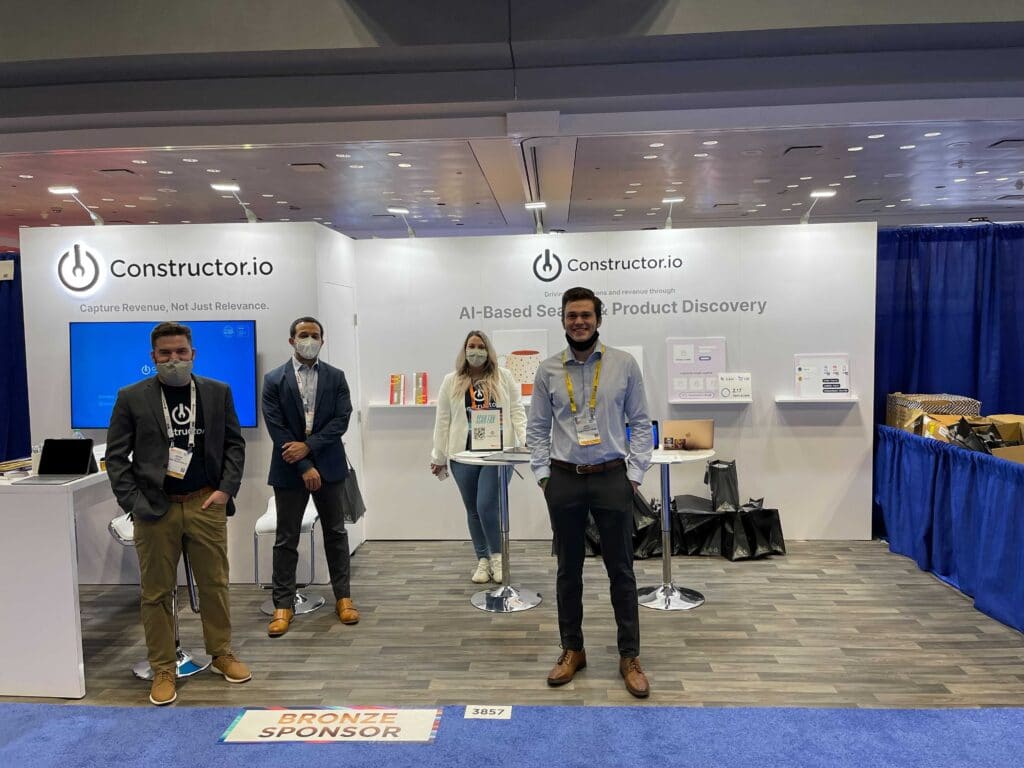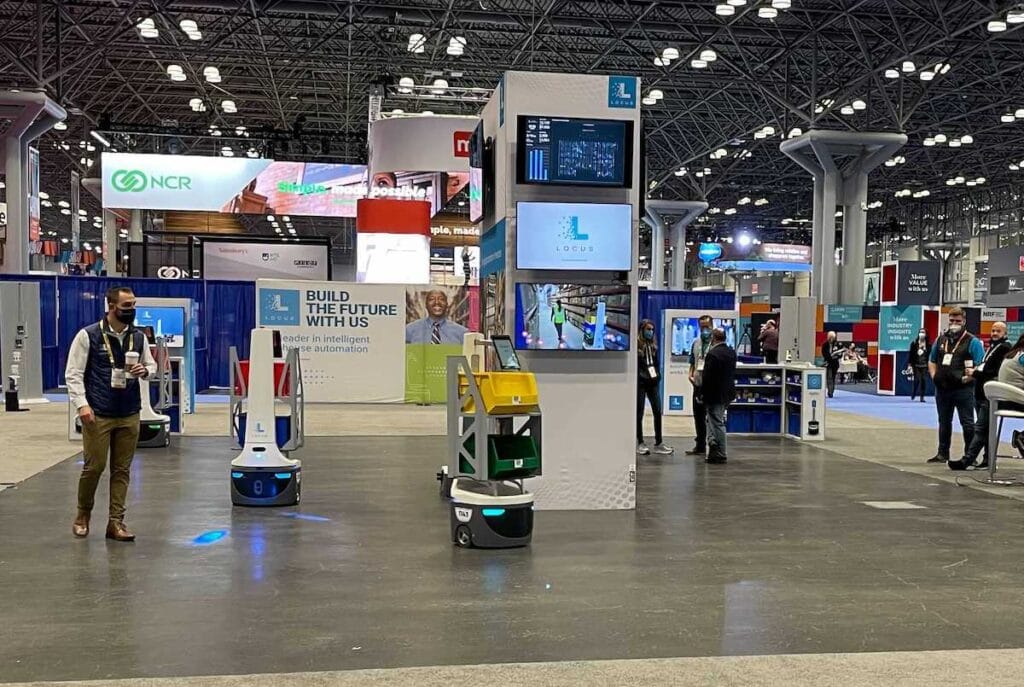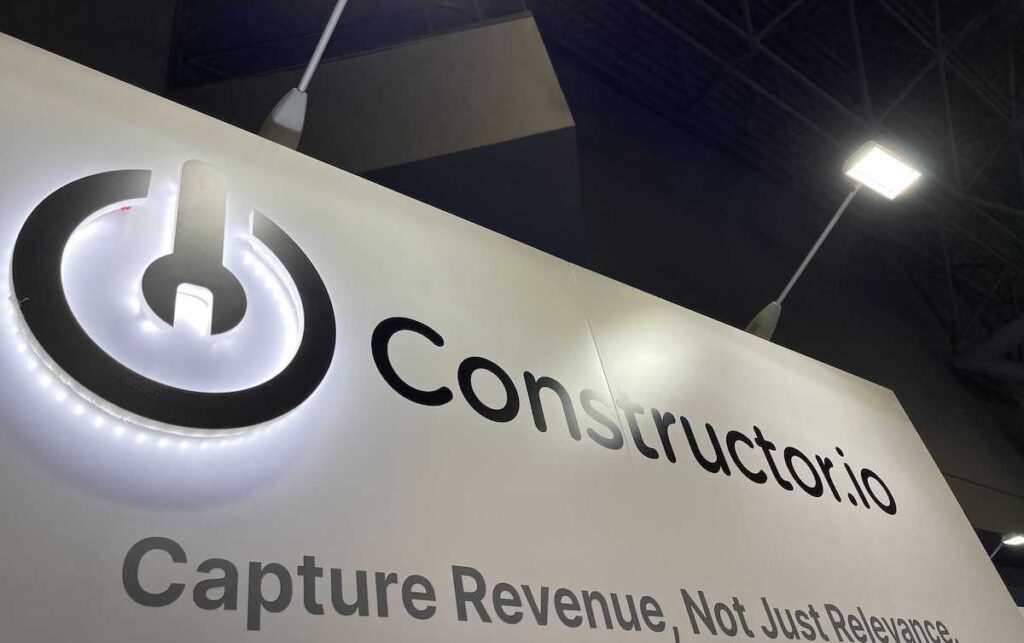On January 16-18, the biggest names in retail converged on the Javits Center in the heart of New York City for NRF 2022 Accelerate: Retail’s Big Show.
Pulling off a conference of this size during a pandemic surge was no small feat. While a number of exhibitor booths remained empty (replaced with sanitizing stations, socially distanced seating areas, live music stages, and other creative uses of the space), attendance remained steady. Many panel sessions and presentations were standing room only, and there was a keen sense of futuristic innovation in retail.
If NRF 2022 made one thing clear, it’s that retail and ecommerce are on the precipice of big changes.

Constructor hosted a booth at NRF 2022, and our team was able to identify key trends on the show floor as well as important insights from industry leaders. Here are our biggest takeaways from this year’s show:
The Metaverse Is Already Here
Despite the massive shifts impacting retail over the past couple of years, companies in 2022 are finding a way to move forward in physical locations—and vendors are more than happy to help them do that.
Many of the efforts to attract customers back into retail stores revolve around minimizing the friction of the in-store experience through technology. This approach already mimics the way that many shoppers operate; as Albertsons CEO Vivek Sankaran explained in his session, “Our best customers are the ones shopping in store and using the digital options.”
The NRF show floor featured dozens of new store concepts, payment models, and merchant intelligence. Relying on spatial data with sensors and cameras that can calculate inventory, determine basket contents, and automate purchases, many solutions were designed to ease common customer pain points.
Vendors also presented new tech-enabled omnichannel marketing opportunities, such as digital sign board concepts that can be placed right on store shelves or throughout stores. While currently used in-store to display price, these products are becoming more complex and meeting more use cases with promotional advertising content and even personalization.
Retail Doubles Down on Automation
The breakout stars of NRF 2022 weren’t keynote speakers or influencers… but robots. While robotic solutions aren’t new to retail as a concept, this year their use case seemed more realistic and viable as a direct reaction to the labor shortages besetting retail stores in 2022.

Here were some of the top automation technologies we saw making a splash on the show floor:
- Warehouse order fulfillment
- Inventory tracking and pricing compliance
- In-store marketing
- Contactless delivery and curbside pickup
- Janitorial services
What’s particularly exciting for us at Constructor is how much potential these automated solutions offer for ecommerce retailers as well. Better, faster inventory management and order fulfillment options are a boon not just to retail stores, but to their ecommerce operations. Technologies that enable smoother customer experiences—in-store and online—are critical to meeting customer expectations in 2022.
AI is a Competitive Advantage for Personalization
While the flashiest technology on the show floor revolved around the physical evolution of retail, speakers throughout this year’s NRF sessions saw the greatest potential for technology in data and business intelligence. How can retailers collect and leverage new data for competitive advantage?

One standout session featured Chris DeFuria, Senior Director of Global Analytics, Merchandising & Planning Systems at Tapestry. DeFuria spoke about Tapestry’s commitment to leveraging AI to provide highly personalized experiences for highly granular segments.
DeFuria reiterated that AI and data-driven initiatives are baked into Tapestry’s processes. The company sees these efforts as integral to bringing seamless experiences to customers who need them. One key advantage of using AI in retail is that data collection is already fairly granular in this industry; retailers already own strong data sets around their product catalog and on point-of-sale data. The next challenge is leveraging that data to drive business value.
Offering insight to other business leaders, DeFuria challenged them to first fully understand the problem space. How can leaders gain insight into where data might be used to answer specific questions or drive specific results and KPIs? Once the problem space is clear, it becomes easier to know what data the company needs, where gaps still exist, and how AI might enable companies to process and leverage that data at scale.
Wondering how to leverage data, AI, and omnichannel for competitive advantage in 2022?
Constructor applies machine learning and AI to customer clickstream data. The result: personalized, optimized product discovery experiences across search, browse, recommendations, and more. Our products help top ecommerce companies drive KPIs and grow lifetime value. Request a demo today.

